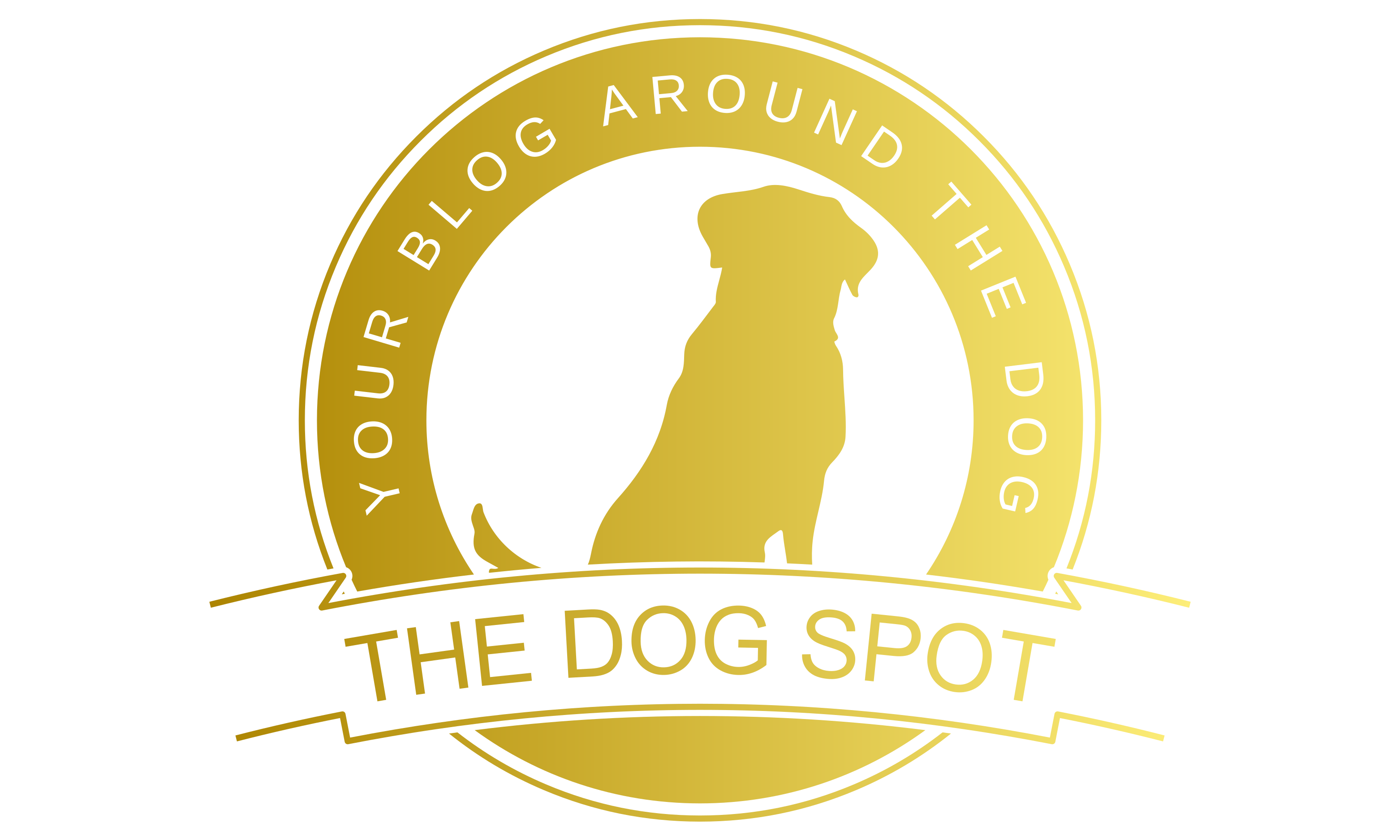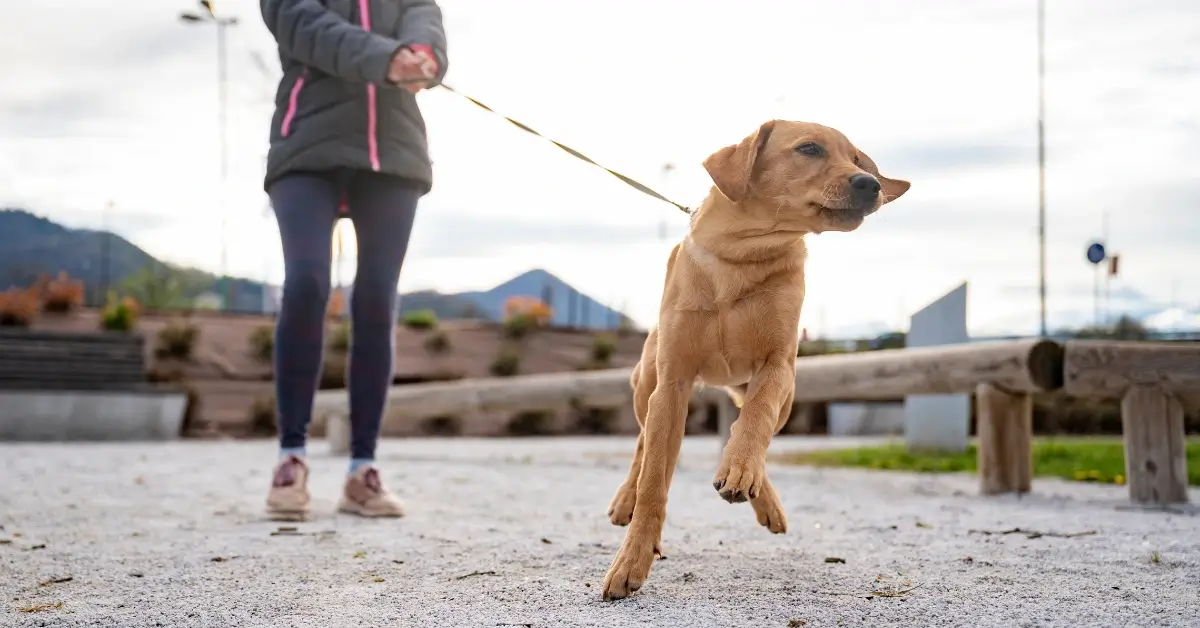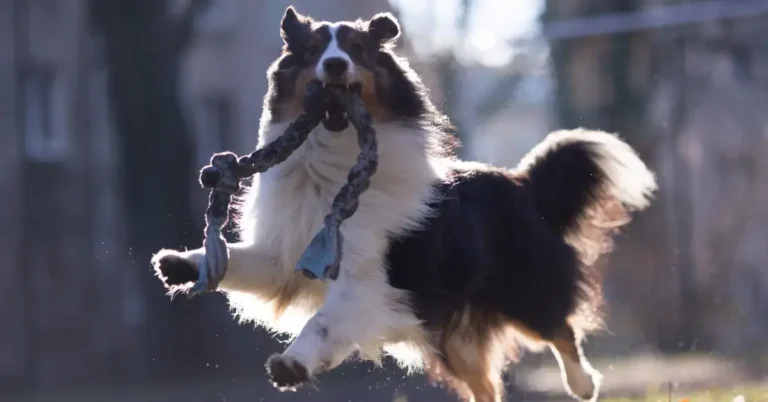Are you tired of being pulled around by your furry friend on walks? Do you also constantly ask yourself, “How to Stop a Dog From Pulling on a Leash?”
We know the feeling very well. Walking a dog that consistently pulls on the leash can be incredibly frustrating and exhausting. But don’t worry; we’ve got some tips and tricks for you on how to prevent your dog from pulling on the leash.
However, to answer the question, “How to Stop a Dog From Pulling on a Leash,” we first need to understand why dogs pull on the leash. Often, they’re simply excited to be outside and want to explore their surroundings. Sometimes, they’ve learned that pulling gets them to their destination faster.
Whatever the reason may be, it’s crucial to address the issue in a positive and effective way. Punishing your dog for pulling on the leash can actually worsen the problem.
So, what can you do to prevent your dog from pulling on the leash? There are various techniques you can try, such as using a chest-led harness, rewarding good behavior, and teaching your dog to walk at your side.
We will delve into these methods and more in the following sections. By the end of this article, you’ll have the tools you need to enjoy peaceful walks with your furry companion.
Pros:
🐶 Easy to read: The book is well-written and easy to understand, making it accessible to both new and experienced dog owners.
🐶Positive training methods: Zak George promotes positive reinforcement training methods, which are proven to be effective and humane.
🐶 Comprehensive guide: The book covers everything from basic obedience training to more advanced skills, making it a great resource for all dog owners.
🐶 Great supplement to videos: While Zak George's YouTube channel is an excellent resource, the book provides more detailed information and serves as a great supplement to the videos.
🐶Helpful tips: The book is full of helpful tips and tricks for dealing with common dog training issues.
Cons:
🙀 Basic information: While the book covers a lot of ground, some readers may find that the information presented is too basic for their needs.
🙀 Limited troubleshooting: While the book does provide some troubleshooting tips, it may not be enough for more complex issues.
🙀 Not a quick fix: Like any training method, positive reinforcement training requires time and effort. Some readers may be disappointed if they are expecting a quick fix for their dog's behavior issues.
How to Stop a Dog From Pulling on a Leash: Understanding Leash Pulling
Leash pulling is a common issue that many pet parents face when walking their dogs. It can be not only frustrating but potentially dangerous if your dog is strong enough to pull you off your feet. So, in the first step of solving how to stop a dog from pulling on a leash, it’s important to understand why they are doing this.
One reason why dogs pull on the leash is that they are excited and curious to explore new sights and smells. Another reason for this behavior is that they are trying to assert their dominance over you. Dogs are pack animals and instinctively want to lead the pack. If they feel like they are not in control, they may try to take the lead by pulling on the leash.
On the other hand, it may simply be that your dog is still full of energy and doesn’t quite know what to do with it. Similarly, it may also be that your dog wants to interact with other people or animals. In this case, as well, your dog may excessively pull on the leash.
It is important to recognize what the triggers are, as only then can you react correctly in each situation. This way, you know when you need to encourage your dog not to pull on the leash further.
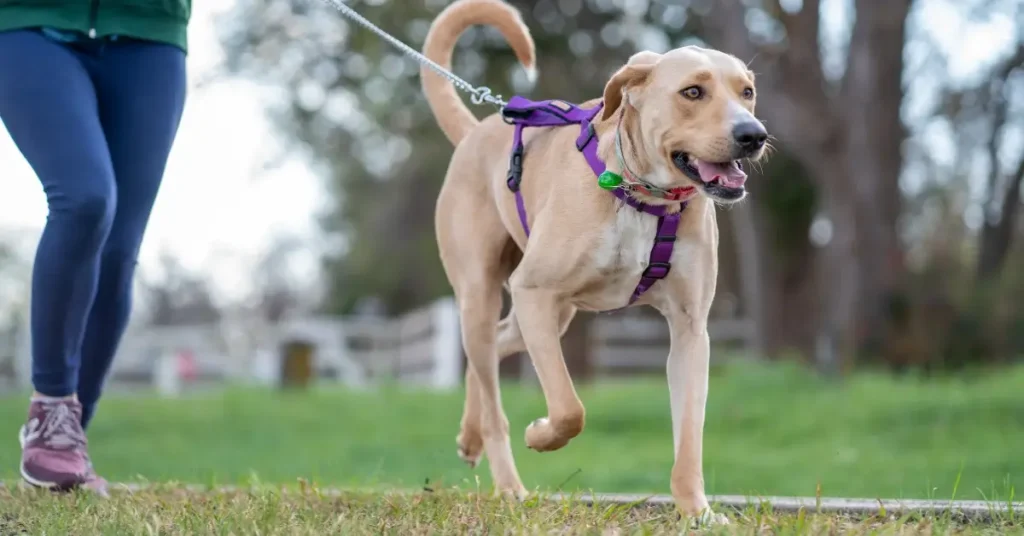
Especially with reactive dogs, it can happen that they pull on the leash more than others. If you want to know if your dog belongs to the most reactive dog breeds, then be sure to check out our article on the topic.
Choosing the Right Equipment
When it comes to how to stop a dog from pulling on a leash, choosing the right equipment is crucial. The right equipment will not only make walking your dog more comfortable for both you and your furry friend, but it can also help prevent injury.
Harnesses
Harnesses are a popular choice when it comes to how to stop a dog from pulling on a leash. They come in many different variations, including front-clip harnesses, back-clip harnesses, and even no-pull harnesses. Front-clip harnesses are particularly effective at preventing pulling because they redirect your dog’s attention toward you when they attempt to pull. No-pull harnesses have a mechanism that gently tightens around your dog’s chest when they pull to discourage them.
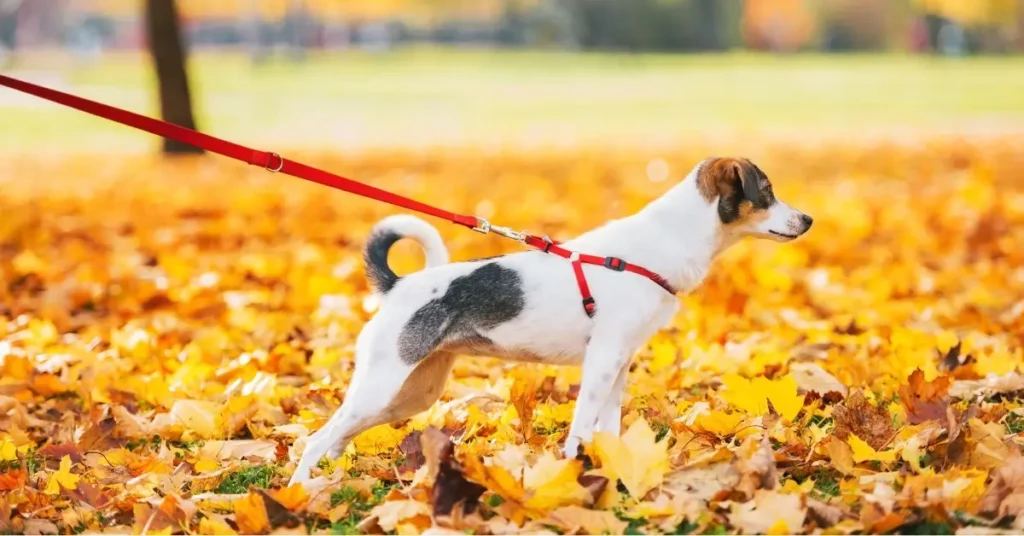
Retractable Leashes
On the other hand, retractable leashes are not suitable when dogs pull on the leash. They provide your dog with too much freedom and can make it difficult to control them. Another reason is the risk of retractable leashes getting tangled around objects or people.
Head Halters
Head halters are another option to address the issue of how to stop a dog from pulling on a leash. They work by gently guiding your dog’s head in the direction you want. However, it’s important to note that it takes some time for your dog to get used to them, and it should never be used with a retractable leash.
Training Tools
There are many training tools that can be supportive in exercises on how to stop a dog from pulling on a leash, such as clickers, treats, and positive reinforcement. Electronic collars are strongly discouraged, as they can cause pain to your dog and disrupt the trust between you.
Grip
It is also important to hold the leash properly in your hands when walking with your dog. A leash with a comfortable handle can prevent injuries to your hands and wrists if your dog suddenly pulls or makes sudden movements.
Training Methods: How to Stop a Dog from Pulling on a Leash
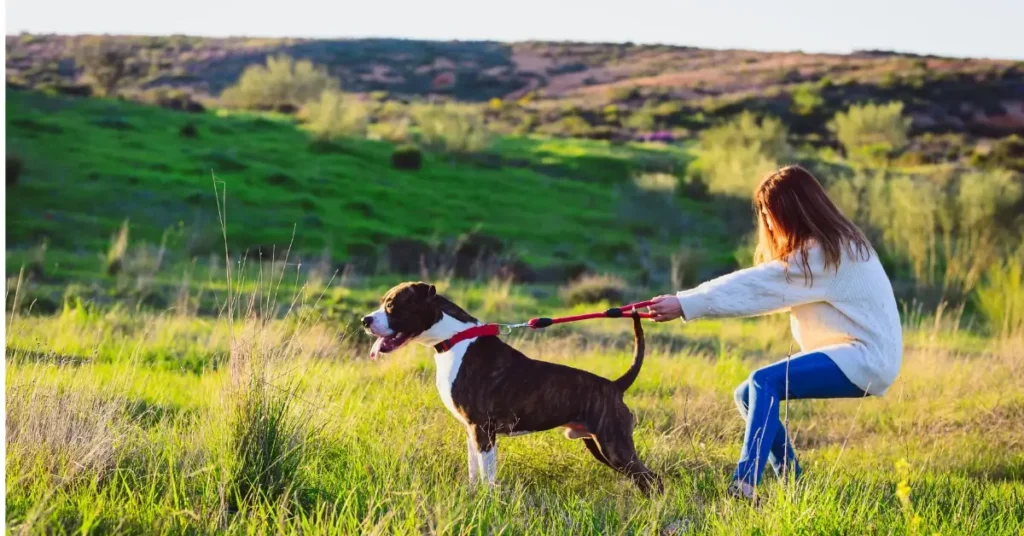
When you’re tired of your dog constantly pulling on the leash during walks, there are some training methods you can try to break this habit. It’s important to train with your furry friend patiently and consistently to achieve success.
An effective method is using positive reinforcement techniques to teach your dog to walk calmly on the leash. Punishing your dog for pulling on the leash can potentially worsen the problem, as it may create a negative association with leash walking.
Reward your dog when they walk calmly by your side. You can use treats, praise, or a favorite toy to acknowledge their good behavior. Always start the training in a low-distraction environment, like your backyard, and gradually increase the level of distraction as your dog becomes more comfortable walking on the leash.
Treats are a supportive tool when it comes to helping your dog quickly learn good habits. The choice of treats is crucial when using them as a reward for positive behavior in training. Use treats that your dog loves and can be quickly consumed. Some good options are small pieces of cheese, chicken, or sausage.
The correct use of treats in leash training is crucial for success.
Start by holding one of the treats in your hand and let your dog sniff it. Then, begin walking with your dog on a loose leash. When your dog walks politely beside you, give them a treat. Repeat this process several times, gradually increasing the distance you walk before giving a treat.
It’s important to only give your dog a treat when they are walking calmly beside you. If your dog starts to pull on the leash, stop walking immediately and wait for them to calm down before continuing. You can also use a verbal command like “heel” or “with me” to remind your dog to stay close to you.
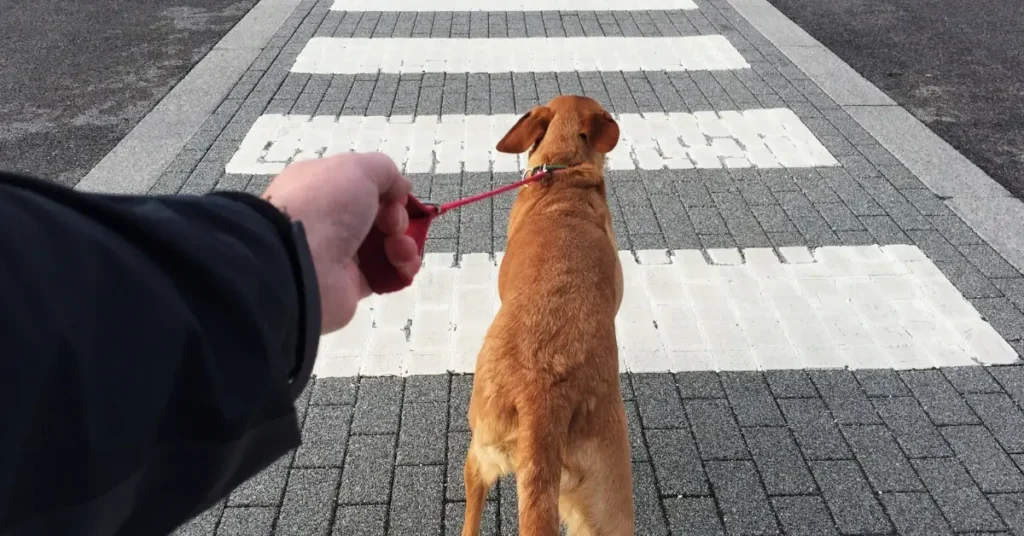
Also, keep in mind that building a positive relationship with your dog takes time. Train consistently and regularly. Patience and perseverance are the keys to success so that you can enjoy your walks together in the future.
Consistency and constancy are essential in your training. This means using the same commands and rewards during every walk. This helps your dog understand what is expected of them and reinforces good behavior.
Changing directions is also an effective way to stop a dog from pulling on a leash. When your dog starts to pull, simply stop and change direction. This behavior forces your dog to pay attention to you and can break the habit of pulling.
You can also signal to your dog to stop pulling on the leash by simply standing still. If your dog pulls on the leash, just stand still until they release the tension on the leash. Only then reward your dog and continue walking. Repeat this process whenever your dog pulls too much on the leash.
Always avoid yanking or choking your dog when they pull on the leash. This is not only ineffective but can also harm your dog and damage your relationship.
If you’re having difficulty training your dog not to pull on the leash, consider seeking assistance from professional dog trainers. They can provide support and guidance to effectively train your dog.
Are you still searching for a name for your four-legged friend and are you a Game of Thrones fan? Then be sure to check out this article.
Importance of Regular Exercise
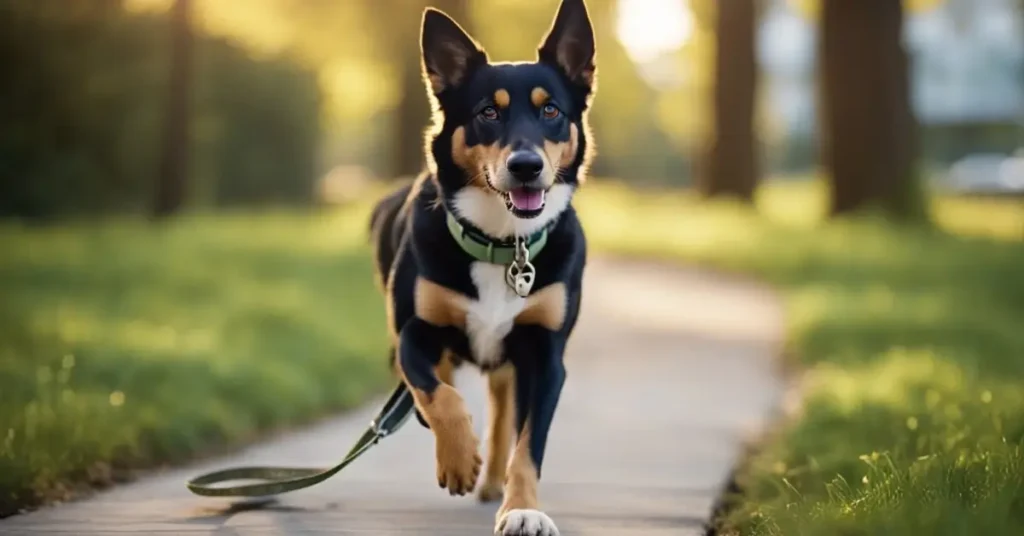
Regular exercise is essential for the health and well-being of our furry friends. It not only helps them maintain a healthy weight but also keeps them mentally stimulated and reduces the risk of certain health problems. As responsible dog owners, it is our duty to ensure that our dogs get enough exercise every day.
One of the best ways to provide your dog with the necessary exercise is by taking them for regular walks. Walking on a leash is an excellent form of exercise for dogs, and it also contributes to improving their behavior and socialization skills. Addressing the issue of how to stop a dog from pulling on a leash is not only important for safe and relaxed walks but is also essential for interactions with other people and dogs.
Training your dog to walk on a loose leash is an important part of their exercise routine. Loose-leash walking means that your dog walks beside you without pulling or tugging on the leash. Training related to how to stop a dog from pulling on a leash undoubtedly requires a lot of time and patience but is well worth the effort.
In addition to regular walks, it’s also important to provide your dog with other forms of exercise.
Playing fetch, going for runs, or engaging in games, for example, are good way to add variety to their exercise routine. The type, extent, and frequency of exercise your dog needs depends on their age, breed, and overall health. It’s advisable to consult with your veterinarian to determine how to keep your dog physically active without overexerting or underexposing them.
How to Stop a Dog From Pulling on a Leash: Our Opinion
We firmly believe that almost every dog owner grapples with the question of “How to Stop a Dog From Pulling on a Leash” when training their dog. After all, the walk should be a harmonious and pleasant experience for both, serving as a source of physical exercise and mental stimulation while strengthening the bond between dog and owner. Understanding the causes of leash pulling is the crucial first step.
With the right methods, this negative behavior in your dog can be corrected. We emphasize the importance of positive reinforcement. Punishing pulling should definitely be avoided, as it can lead to negative associations with walking and worsen the problem.
Instead, rewarding good behavior with treats, praise, or playtime can effectively encourage dogs to walk calmly by your side. We want to emphasize the importance of consistency in training methods. Using the same commands and rewards is crucial in helping dogs understand what is expected of them.
We also consider the selection of the right equipment equally crucial. Choosing the appropriate harness, leash, or head halter can significantly impact your dog’s behavior during walks. Only with the right equipment will you be able to solve the problem.
In summary, teaching a dog to walk calmly on a leash greatly enhances the quality of life for both the pet and the owner. By understanding the causes of leash pulling, applying positive reinforcement techniques, and selecting suitable equipment, we can turn walks into pleasant and harmonious experiences. Patience, consistency, and positive reinforcement are the cornerstones of this endeavor and lead to a well-behaved and contented canine companion.
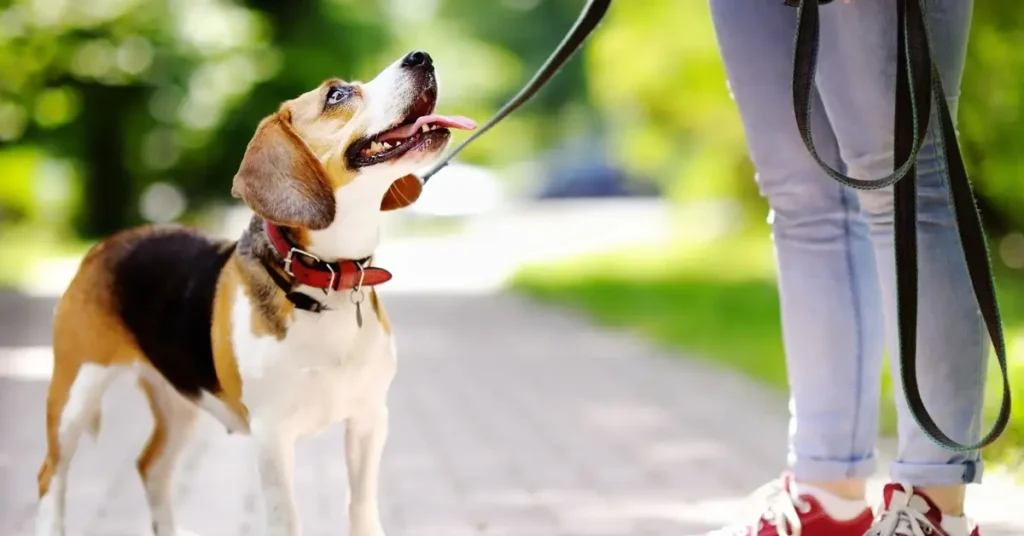
How to Stop a Dog From Pulling on a Leash: Frequently Asked Questions
How do you get my dog to stop pulling me on the leash?
One way to get your dog to stop pulling on the leash is to use positive reinforcement training. Reward your dog with treats and praise when they walk calmly beside you without pulling. Consistency and patience are key in this process.
How can I teach my dog to walk on a loose leash?
Teaching a dog to walk on a loose leash takes time and patience. One effective method is to use positive reinforcement training. Reward your dog when they walk calmly beside you without pulling. Start with short walks and gradually increase the distance. Consistency is key, so make sure to practice every day.
What are some effective ways to stop my dog from pulling on the leash?
Effective ways to stop your dog from pulling on the leash include positive reinforcement training, using a front-clip harness, and teaching your dog to focus on you during walks. It’s important to be consistent and patient in your training efforts.
Why does my dog always pull on the leash?
Dogs pull on the leash for several reasons, including lack of training, excitement, and distractions. Dogs also tend to repeat actions that reward them, so if pulling on the leash has been rewarding in the past, they may continue to do so.
Are front clip harnesses effective in stopping dogs from pulling on the leash?
Yes, front clip harnesses can be effective in stopping dogs from pulling on the leash. These harnesses attach to a clip on the front of your dog’s chest, which helps prevent pulling. However, it’s important to note that no single method works for every dog. It may take some trial and error to find the best method for your dog.
How did you find our article on “How to Stop a Dog From Pulling on a Leash”? Do you have any more suggestions or feedback? Please feel free to share them in the comments. We appreciate your thoughts on the topic of “How to Stop a Dog From Pulling on a Leash.”
